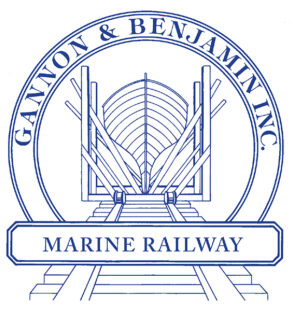By Jesse Terry, CYOA Secretary and Owner of Abigail
It was announced at this year's CYOA Awards Party that Steve White was stepping down as President of the association. It is with sadness and appreciation that we say thank you after many years at the helm in the post-Panerai era.
We could not let Steve leave without sitting down with him to discuss his legacy of having fun and emphasizing the fun in sailing, cruising, racing, building, preserving, restoring and talking wood boats. Steve, being the guy that he is, transformed that interview into the opportunity to take a deep, deep dive into the wood boat world and, more appropriately, the soul of wooden boats through a winter pilgrimage into Maine. The journey will be broken into three parts for the classicyachts.org and our membership.
JT: Steve, as you step down as the President of CYOA, there are more events than ever and participation is at an all time high. Any advice to keep up the momentum and grow?
SW: Keep the events fun! Focus on the spectacle of woodboats and less about the results. We want to keep everyone at the race happy, not just the award winners.
There are a great number of New England events today. I am excited about Antigua potentially switching to the CRF rating and expanding the fleet. Antigua should provide European exposure. We also need to better promote the Southern New England events.
Classic cars won't go away because of electric vehicles, but we need to keep beating the drum about wood boats and the community.
JT: You founded the biggest wooden boat race in the country, maybe the world. Can you share some of the origin story because the Eggemoggin Reach Race (ERR) is certainly an example of how to have fun at a race?
SW: Frank Hall, our yard manager at Brooklin Boatyard, and I started the race in 1986. Wood boats did not have a good way to race together beyond the PHRF classes. The ERR was founded to give wood boats a chance to race against each other. The first race was a dozen boats via word of mouth. Each year thereafter, the race continued to double until we were up to 90 boats in four or five years. We had it at the WoodenBoat Magazine campus because the harbor was big and they had the space. We just asked that everyone bring hordevours.
Six or so years in, Camden Yacht Club called to ask if they could do a race to Brooklin since all their boats were coming. We offered to host the finish and record the times. Castine soon followed. Next we got catering and a band.
It was becoming a lot of work. Carl Cramer at Wooden Boat ran it for a couple of years, but he reached the same conclusion. I called Rockport to help three or so years later.
Our peak was 133 boats, but it is typically about 90 to 100. It was all organic growth. The time of year helped because there were no competing events at the time.
JT: How did you choose the course?
SW: We wanted it to start near WoodenBoat campus. 15 miles seemed like it would be the right distance so that we could start late enough to get the developing breeze.
I wanted to bring the boats out to Jericho Bay where the wind would increase.
Setting buoys added to the regatta work so we kept it to government marks. No one has hit any ledges.
JT: How were you able to handicap the boats in those early days and prior to the Classic Rating Formula (CRF)?
SW: Joel White and Maynard Bray initially came up with a modified rating based on the CCA rule, which was modified again over time. Chris Wick and then Jim Taylor developed it further in the 1990s. It was controlled by Panerai until 2016 when CYOA formed a technical committee to manage it.
Although Steve has stepped down as President of CYOA, he will continue to serve on the board and technical committee. Additionally, he will still be the host to the ERR, ie "the woodstock of yachting."
The next couple of newsletters will be focused on why Maine has so many wood boats and the past, present and future of the community with Steve as a guide and the help of Jon Wilson and Maynard Bray.









